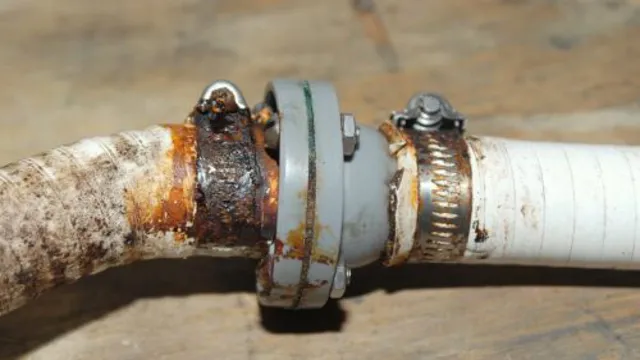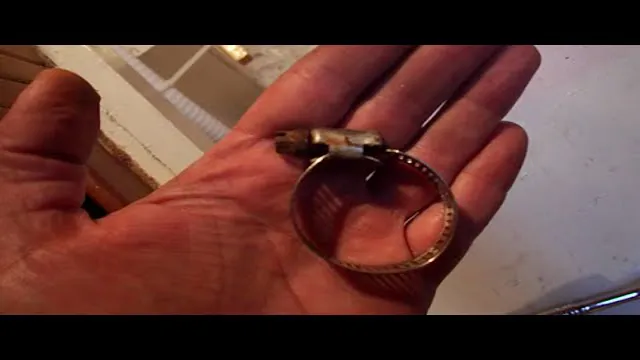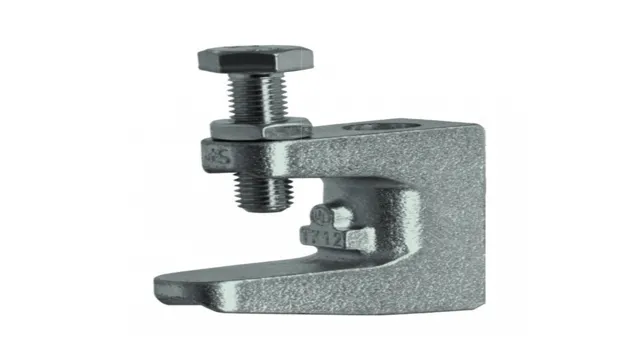Can You Use Hose Clamps on AC Lines? Here’s What You Need to Know

If you’re working on an AC system, you’ll likely come across a situation where you need to connect two hoses together. This is where hose clamps come in handy. Hose clamps are great for sealing off and securing hoses, but what about using them on AC lines? Is it safe to use hose clamps on these lines? The short answer is yes, you can use hose clamps on AC lines, but there are some things you should know before doing so.
In this blog post, we’ll cover everything you need to know about using hose clamps on AC lines, so you can get the job done safely and effectively.
What are Hose Clamps?
Hose clamps are devices used to attach and seal hoses to fittings. They are commonly used in various applications, including automotive, plumbing, and industrial systems. While hose clamps have proven effective in holding hoses in place, the question arises whether they can be used on AC lines.
The answer is sometimes yes and sometimes no. Hose clamps can be used on certain types of AC lines, such as rubber hoses, to prevent them from slipping or leaking. However, they are not recommended for use on metallic hard lines, as they can cause damage or deformation to the line.
It is essential to check the manufacturer’s recommendations and guidelines before using hose clamps on AC lines to ensure safety and efficiency. Overall, hose clamps can be a helpful tool in securing hoses, but it is crucial to use them appropriately and within the recommended specifications to avoid any potential issues.
Definition and Function
Hose clamps are a vital part of any plumping or piping system. They are simple devices with a straightforward function: to hold a hose securely in place while under pressure. Hose clamps can come in various shapes and sizes, but they all have one thing in common – they use tension to grip onto a hose and prevent it from slipping off.
They work by compressing a metal band around the hose, creating a tight seal that both resists leaks and keeps the hose in place. This makes them an essential component in many different industries, including automotive, plumbing, and aerospace. Whether you’re trying to connect a pipe to your water heater or keep an airplane’s hydraulic system running smoothly, a good hose clamp can mean the difference between success and failure.
So whether you’re a professional mechanic or a DIY enthusiast, it’s important to choose the right type of hose clamp for your needs and make sure it’s installed correctly.

Types of Hose Clamps
Hose clamps are tools that are used to secure flexible hoses over fittings and prevent any fluids or gases from leaking. They are essential in keeping hoses in place and ensuring that they function effectively. Hose clamps come in different types, and the type of clamp that you use will depend on the hose’s size and the application at hand.
The most common types of hose clamps include screw clamps, ear clamps, wire clamps, and spring clamps. Screw clamps are made of stainless steel and are tightened using a screwdriver, making them perfect for high-pressure applications. Ear clamps are tightened using pliers and rely on the force exerted by the ear of the clamp to hold the hose in place.
Wire clamps are made of wire and are tightened by reducing the clamp’s diameter using pliers. Spring clamps are self-tightening and are perfect for automotive applications. In summary, choosing the right hose clamp is critical in ensuring that your hoses remain functional and free from leaks.
Can You Use Hose Clamps on AC Lines?
Can you use hose clamps on AC lines? While it may seem like an easy solution to fix a leaking AC system, it’s not recommended to use hose clamps on AC lines. AC systems operate under high pressures, meaning any leaks or loose connections can lead to significant damage. Hose clamps may not provide enough pressure to keep the AC lines secure, leading to leaks and potentially costly repairs.
It’s important to use the right materials and techniques when working on AC systems to ensure proper function and safety. So, while a hose clamp may seem like a quick fix at the moment, it’s not worth the potential risks and damages it could cause in the long run.
Risks and Benefits
Using hose clamps on AC lines is a common DIY solution for sealing refrigerant leaks. However, it comes with both risks and benefits. On one hand, hose clamps can be a quick and inexpensive fix to ensure that refrigerant doesn’t escape from the AC system.
But on the other hand, it’s important to note that hose clamps aren’t designed for AC systems and can cause long-term damage. Hose clamps can create a point of weakness in the line, leading to refrigerant leaks in the future. To avoid this, it’s recommended to use proper AC line repair equipment, rather than resorting to a makeshift solution.
While hose clamps may seem like a convenient option, in the long run, the risks outweigh the benefits. So, it’s crucial to evaluate the situation carefully and invest in proper AC line repair techniques to ensure a long-lasting repair without any further consequences.
Industry Standards and Regulations
Hose clamps are a common tool used in various industries, including automotive, plumbing, and HVAC. However, when it comes to AC lines, it’s important to be mindful of industry standards and regulations. In most cases, hose clamps are not recommended for use on AC lines due to potential issues with leaks and refrigerant loss.
Instead, AC lines require specific fittings and connections that are designed to withstand the high pressures and temperatures of AC systems. These fittings should be installed by qualified professionals who adhere to industry standards and regulations. So, while hose clamps may seem like a quick and easy solution, it’s best to avoid them when working with AC lines and follow proper procedures to ensure the safety and efficiency of your AC system.
Recommended Alternatives
Using hose clamps on AC lines is not recommended. This is because hose clamps are not designed to handle the high pressures and temperatures that AC lines are exposed to. Using hose clamps could lead to leaks, which could cause the AC system to malfunction, leading to higher repair costs in the long run.
One recommended alternative is to use a specialized AC line clamp. These clamps are designed to withstand the high pressures and temperatures of AC lines, ensuring a secure and leak-free connection. Another alternative is to use crimp fittings or brazed fittings, which are specifically designed for AC lines, and are more reliable and durable than hose clamps.
Overall, using specialized AC line clamps or fittings is the safest and most reliable way to ensure that your AC lines are properly secured and leak-free, and that your AC system functions properly.
How to Install Hose Clamps on AC Lines
If you’re wondering whether or not you can use hose clamps on AC lines, the answer is yes! Installing hose clamps is a fairly easy and cost-effective way to ensure that your AC lines are secure and leak-free. First, you’ll want to make sure that your AC system is depressurized. Then, locate the area where you want to install the hose clamp.
Next, slide the clamp onto the AC line – making sure it’s snug but not too tight. Using a screwdriver, tighten the clamp until it’s securely in place. Be sure to double-check your work, as you don’t want any leaks or loose connections.
Overall, using hose clamps on your AC lines can save you money in the long run by preventing leaks and prolonging the life of your AC system.
Step-by-Step Guide
If you need to install hose clamps on your AC lines, don’t worry, it’s not as complicated as it sounds! Here’s a step-by-step guide to help you out. First, make sure you have the correct size of clamps for your AC lines. Then, take a hose clamp and feed it onto the AC line, making sure it’s in the correct position.
Tighten the clamp with a screwdriver until it’s snug, but be careful not to over-tighten and damage the hose. Repeat this process for each clamp needed. Once all the clamps are in place, turn on your AC and check for any leaks.
If you find any, simply tighten the clamps a bit more until the leaks stop. By following these simple steps, you can easily install hose clamps on your AC lines and keep your system running smoothly.
Recommended Tools
Installing hose clamps on AC lines is an essential part of maintaining your air conditioning system. It prevents leaks, prolongs the life of your AC unit, and ensures that air flows efficiently through the system. First, you need to gather the necessary tools such as hose clamps, pliers, and screwdrivers.
Then, locate the AC line and identify where the hose clamp needs to be placed. Next, place the hose clamp over the hose and tighten it using the screwdriver and pliers. Make sure to tighten it enough to secure the hose but not too tight to avoid damaging the hose.
Finally, check for any leaks and ensure that no air is escaping from the clamped area. By following these steps, you can successfully install hose clamps on your AC lines and prevent potential air conditioning problems.
Conclusion and Final Thoughts
In conclusion, the answer to whether hose clamps can be used on AC lines is akin to asking if a hammer can be used to solve every household problem- technically, it could work in some instances, but it’s not the best or safest option. While hose clamps may seem like a quick fix for AC lines, it’s crucial to remember that AC systems operate under high pressure and need specialized fittings to ensure proper function and safety. So, instead of risking a potential AC disaster, it’s always best to consult with a professional and use the recommended components for your AC system.
“
FAQs
1. Are hose clamps suitable for use on AC lines? Yes, hose clamps can be used on AC lines as long as they are the appropriate size and material for the application. 2. What types of hose clamps are recommended for AC lines? Spring clamps are commonly used for AC lines, as they provide a secure grip without damaging the tubing. 3. Is it necessary to use specialized clamps for AC lines? While specialized clamps are available for AC lines, they are not always necessary. As long as the hose clamp is suited to the size and material of the line, it should provide a secure and safe connection. 4. Can hose clamps be used on both high and low-pressure AC lines? Yes, hose clamps can be used on both high and low-pressure AC lines. 5. Is it important to tighten hose clamps to a specific torque specification on AC lines? Yes, it is crucial to tighten hose clamps to the specified torque level to prevent leaks and damage. Careful attention to the specific torque requirements should be given when installing hose clamps on AC lines. 6. Can hose clamps be reused on AC lines? While hose clamps can be reused, it is generally recommended to replace them with new clamps to ensure a secure connection and prevent leaks. 7. What are some tips for installing hose clamps on AC lines? It is important to clean the surface of the hose or tubing thoroughly before attaching the clamp. Additionally, proper alignment and sizing of the clamp are essential for a secure connection. Finally, use a torque wrench to ensure the clamp is tightened to the recommended specification.



